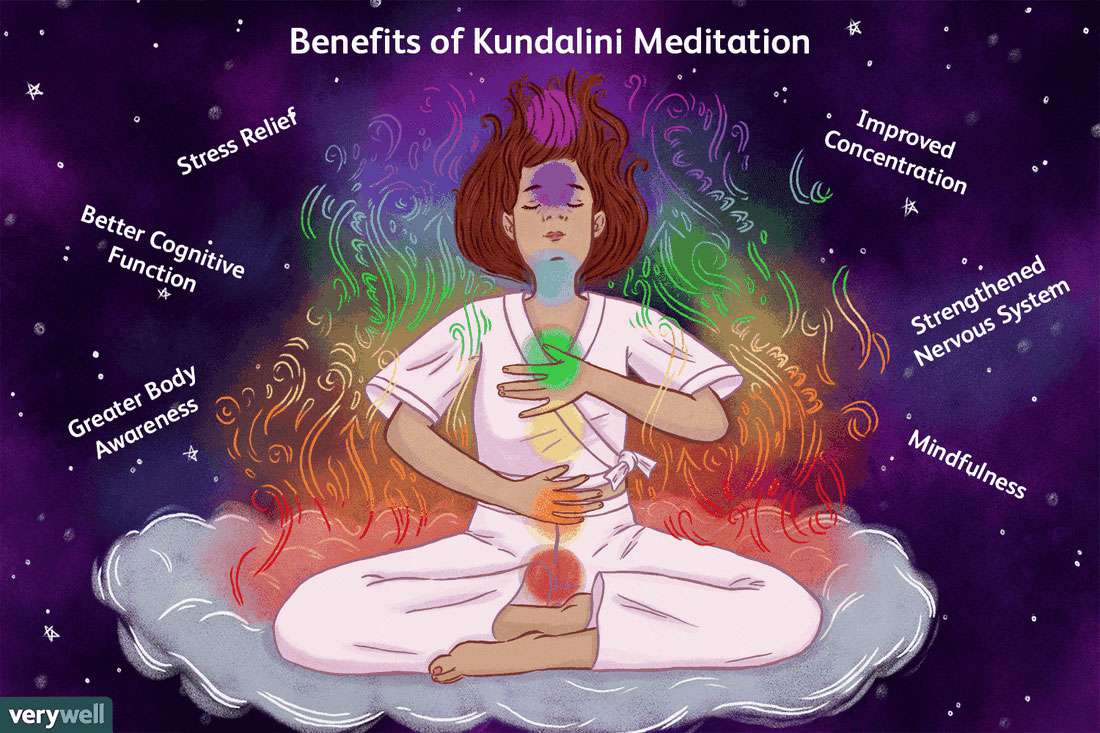Kundalini Meditation Vs. Other Meditation Styles: a Comparative Analysis

Are you looking to enhance your meditation practice?
In this article, we will dive into the world of Kundalini meditation and compare it to other meditation styles.
Discover the unique benefits of Kundalini meditation, explore different techniques and practices, and understand the role of breathwork in various styles.
With this comparative analysis, you will be able to find the right meditation style that resonates with you.
So, let’s begin this journey of self-discovery and enlightenment together.
Key Takeaways
- Kundalini meditation goes beyond relaxation and stress relief, awakening spiritual potential and purifying and balancing the entire being.
- Breathwork in Kundalini and other meditation styles facilitates the movement of energy throughout the body and consciously controls breath to regulate the flow of life force energy.
- Chanting and mantras in Kundalini meditation activate different areas of the brain, stimulate the release of feel-good hormones, and deepen focus and concentration.
- Different meditation styles, such as Mindfulness, Transcendental, Loving-Kindness, and Kundalini, offer unique approaches to achieving inner peace and mental clarity.
Benefits of Kundalini Meditation
You’ll be amazed at the benefits of Kundalini meditation. This powerful practice goes beyond just relaxation and stress relief. The benefits of Kundalini meditation extend to a deep spiritual awakening. By activating the dormant energy at the base of your spine, you can experience profound transformation and heightened consciousness.
One of the main benefits of Kundalini meditation is its ability to awaken your spiritual potential. As the energy rises through your chakras, it purifies and balances your entire being. This leads to a greater sense of self-awareness, clarity, and connection to the divine.
Additionally, Kundalini meditation can help you release emotional blockages and past traumas. By working through these issues on a deeper level, you can experience true healing and personal growth.
Furthermore, regular practice of Kundalini meditation can enhance your creativity, intuition, and overall well-being. It can also improve your focus, memory, and cognitive abilities.
Techniques and Practices in Kundalini Meditation
In Kundalini meditation, breathwork plays a crucial role in activating and balancing the energy within your body. By consciously controlling your breath, you can stimulate the flow of prana and awaken your Kundalini energy.
Chanting and mantras are also powerful tools used in Kundalini meditation to focus the mind, elevate consciousness, and create a vibrational resonance within the body.
Incorporating these practices into your meditation routine can enhance your experience and deepen your connection to your inner self.
Breathwork in Kundalini
Breathwork plays a crucial role in Kundalini meditation by facilitating the movement of energy throughout the body. The importance of breath control cannot be overstated in this practice. By consciously controlling your breath, you can regulate the flow of prana, or life force energy, in your body. This enhances your ability to access higher states of consciousness and awaken the dormant Kundalini energy at the base of your spine.
In other meditation styles, breathwork techniques may vary, but their purpose remains the same – to bring awareness to the breath and use it as a tool for grounding, relaxation, and inner transformation. Some common breathwork techniques found in other meditation styles include:
- Diaphragmatic breathing: Focusing on deep belly breaths to bring about a sense of calm and relaxation.
- Alternate nostril breathing: Balancing the energy in the body by alternating the breath between the left and right nostrils.
- Breath counting: Counting the breaths to cultivate focus and concentration.
- Breath awareness: Simply observing the natural flow of the breath without trying to control or manipulate it.
Chanting and Mantras
To enhance your chanting and mantra practice, it’s important to find a comfortable and quiet space where you can fully immerse yourself in the rhythmic repetition of sacred sounds. Chanting is a powerful tool that offers numerous benefits to your mind, body, and spirit.
When you engage in chanting, you activate different areas of your brain and stimulate the release of feel-good hormones, promoting a sense of calm and relaxation. Chanting also helps to deepen your focus and concentration, allowing you to enter a meditative state more easily.
Mantra techniques, such as using a mala or repeating specific sounds, can further enhance the effectiveness of your chanting practice.
Exploring Different Styles of Meditation
Different styles of meditation offer unique approaches to achieving inner peace and mental clarity. Here are four styles that you can explore:
- Mindfulness Meditation: This style focuses on being fully present in the moment, observing your thoughts and emotions without judgment. It has been shown to reduce stress, improve focus, and enhance overall well-being.
- Transcendental Meditation: With this technique, you repeat a mantra silently to yourself, allowing your mind to transcend to a state of deep relaxation. It has been found to reduce anxiety, increase creativity, and promote self-awareness.
- Loving-Kindness Meditation: This practice involves cultivating feelings of love, compassion, and kindness towards oneself and others. It can enhance empathy, reduce negative emotions, and improve relationships.
- Kundalini Meditation: Kundalini yoga combines physical postures, breathing techniques, and meditation to awaken the dormant energy within you. It can help release stress, increase vitality, and promote spiritual growth.
Comparing Physical and Energetic Aspects of Meditation
In this discussion, you’ll explore the fascinating relationship between the body and mind in meditation.
Discover how different meditation techniques can help you tap into the body-mind connection, allowing for a deeper sense of self-awareness and relaxation.
Additionally, you’ll learn about the concept of harnessing subtle energy in meditation.
Understand how to channel and utilize this energy for personal growth and healing.
Body-Mind Connection in Meditation
The body-mind connection is strengthened during meditation through focused breathing and relaxation techniques. By practicing mindfulness techniques, you can enhance this connection and experience a deeper sense of self-awareness and well-being.
Here are four ways meditation enhances the mind-body connection:
- Increased self-awareness: Through meditation, you learn to observe your thoughts and bodily sensations without judgment, allowing you to become more attuned to the messages your body is sending.
- Reduced stress and anxiety: By focusing on your breath and letting go of stressful thoughts, you activate the relaxation response in your body, leading to a decrease in stress hormones and an overall sense of calm.
- Improved physical health: Meditation has been shown to positively impact various physical conditions, such as lowering blood pressure, boosting the immune system, and reducing chronic pain.
- Enhanced mental clarity: Regular meditation practice can improve concentration, memory, and cognitive function, allowing you to approach tasks with greater focus and clarity.
Through these mindfulness techniques, you can cultivate a stronger mind-body connection, leading to improved overall well-being.
Harnessing Subtle Energy
Harnessing subtle energy through meditation can lead to a deeper sense of connection and vitality. When you engage in energy healing practices during meditation, you tap into the powerful life force that flows within you.
By focusing your attention on the energy centers in your body, known as chakras, you can create balance and harmony. Through meditation, you can channel this subtle energy, allowing it to flow freely throughout your entire being. This can result in a profound sense of well-being and rejuvenation.
Balancing your chakras through meditation can also help to release blockages and promote healing on physical, emotional, and spiritual levels. As you cultivate a deeper connection with your subtle energy, you will experience increased vitality and a greater sense of wholeness.
Understanding the Role of Breathwork in Different Meditation Styles
Breathwork plays a vital role in various meditation styles, influencing the depth and quality of the practice. Through conscious control of your breath, you can enhance your meditation experience and access deeper states of relaxation and awareness.
Here are some key factors to consider when incorporating breathwork into your meditation practice:
- Role of visualization in breathwork: Visualizing the breath as it flows in and out of your body can help focus your attention and calm the mind. By imagining the breath as a stream of energy, you can cultivate a sense of connection and flow within yourself.
- Incorporating movement in breathwork techniques: Some meditation styles, such as Kundalini, incorporate specific movements and postures along with breathwork. These movements help to activate and balance the body’s energy centers, enhancing the overall effectiveness of the practice.
- Breath as an anchor: Using the breath as an anchor can help you stay present and centered during meditation. By focusing on the sensation of your breath entering and leaving your body, you can quiet the mind and cultivate a deep sense of inner stillness.
- Breath as a tool for emotional release: Deep, conscious breathing can help release emotional tension and promote emotional healing. By bringing awareness to your breath, you can allow any suppressed emotions to surface and be released, leading to a greater sense of inner peace and balance.
Finding the Right Meditation Style for You
Finding the right meditation style for you can be a personal journey of exploration and self-discovery. When it comes to choosing a meditation style, it is essential to consider your personal preferences and what resonates with you on a deeper level.
Each person is unique, and what works for one may not work for another. That’s why understanding the importance of personal preference is crucial. There are various meditation styles available, such as mindfulness, transcendental, loving-kindness, and kundalini meditation.
Take the time to explore and try out different styles to see which one feels most comfortable and aligns with your goals and intentions. Trust your intuition and listen to your heart.
Frequently Asked Questions
Can Kundalini Meditation Help With Physical Health Issues?
Kundalini meditation can be effective in addressing physical health issues like chronic pain and boosting the immune system. It offers a unique approach that focuses on energy flow and can complement other meditation styles.
How Does Kundalini Meditation Differ From Mindfulness Meditation?
Kundalini meditation and mindfulness meditation have similarities in terms of bringing awareness to the present moment. However, Kundalini meditation focuses on awakening the energy within, while mindfulness meditation focuses on observing thoughts and sensations.
Is Kundalini Meditation Suitable for Beginners?
Yes, kundalini meditation is suitable for beginners. It offers specific techniques for beginners to start their practice, providing benefits like increased energy and self-awareness. However, it may also present challenges due to its intense nature.
Can Kundalini Meditation Help in Managing Stress and Anxiety?
Kundalini meditation can help you manage stress and anxiety by promoting relaxation and balance in your mind and body. It also allows you to explore the spiritual aspects of meditation, contributing to your overall well-being.
Are There Any Potential Risks or Side Effects Associated With Kundalini Meditation?
There can be potential dangers and side effects associated with kundalini meditation. It is important to take precautions, such as practicing under the guidance of an experienced teacher, to ensure your safety.








